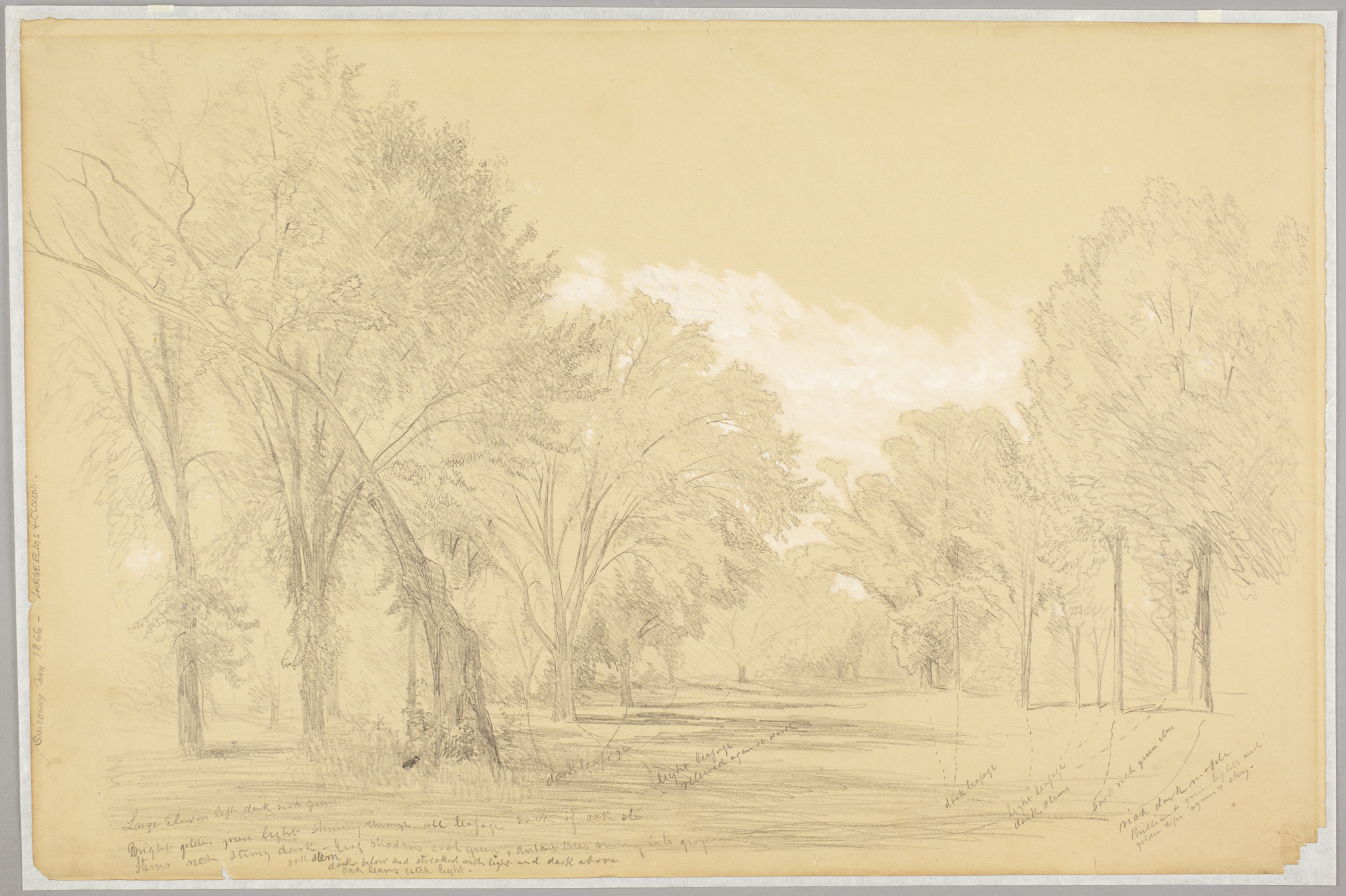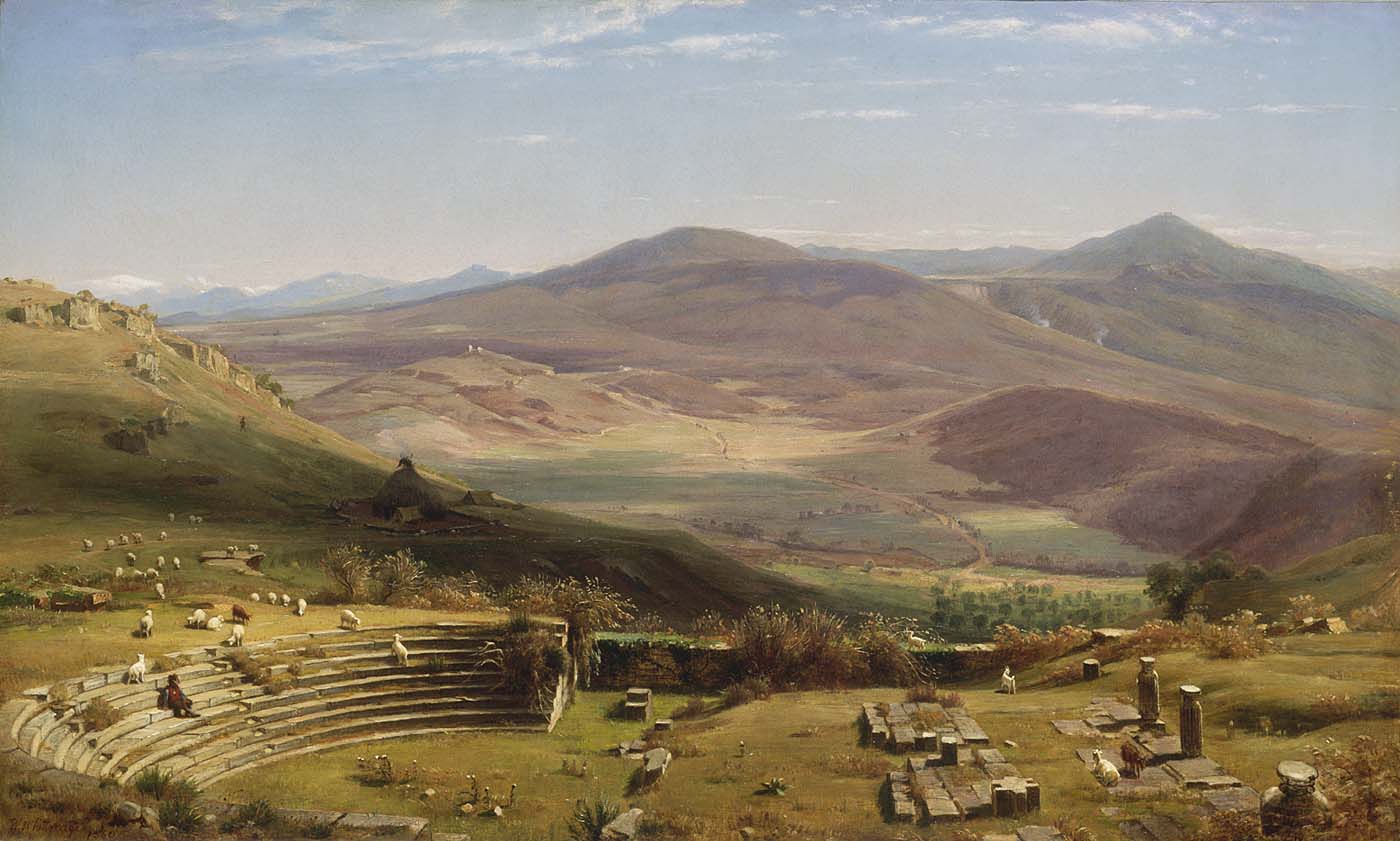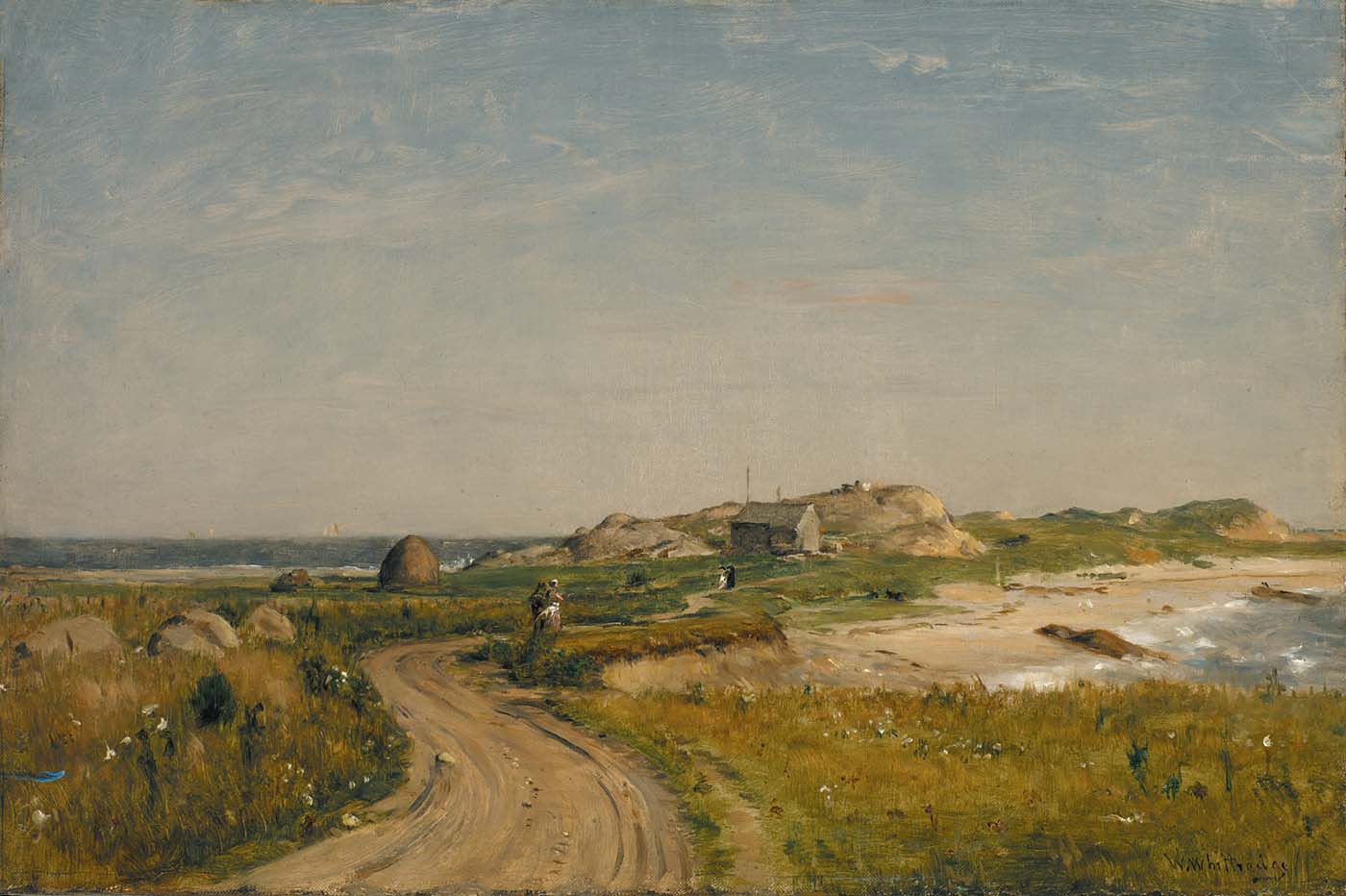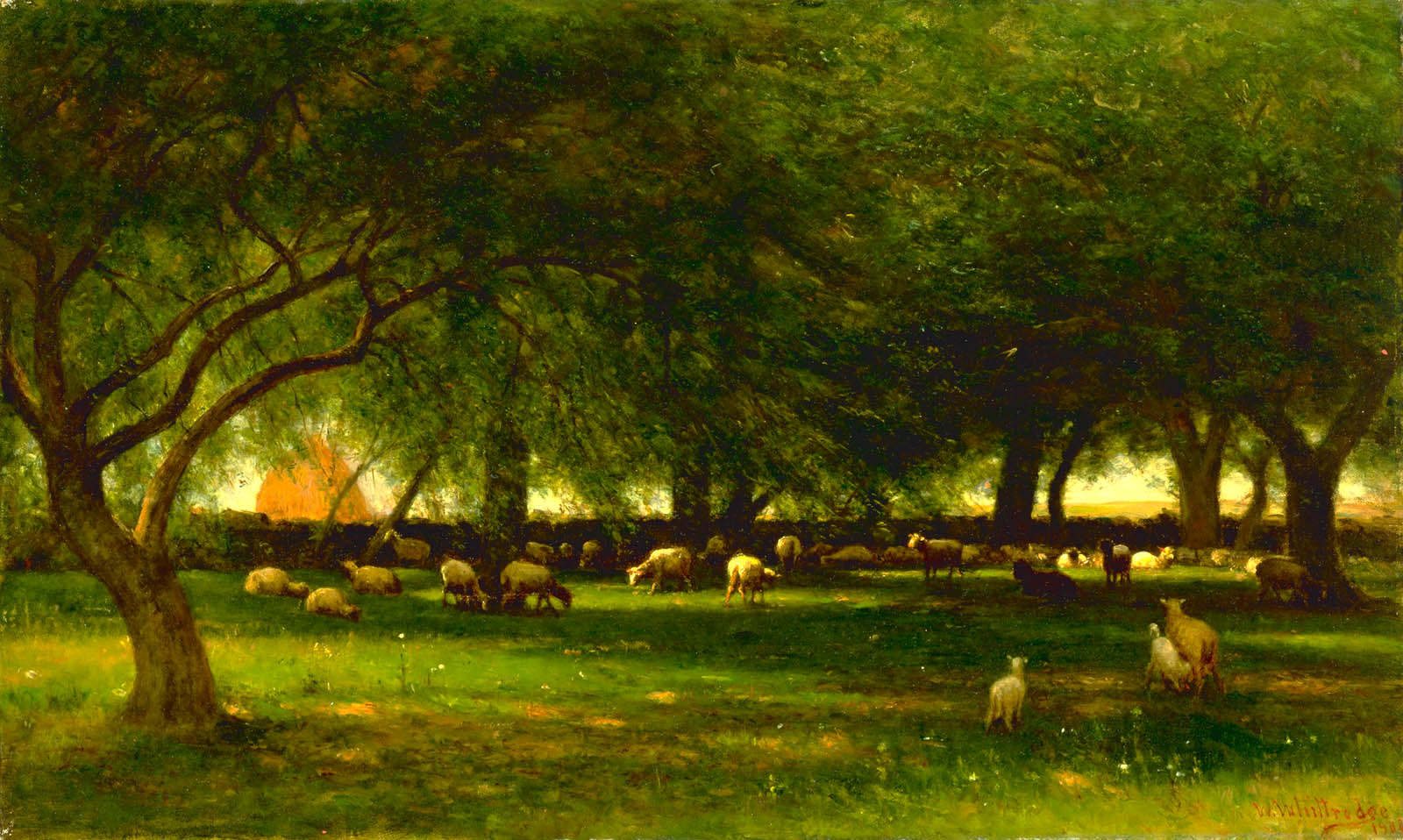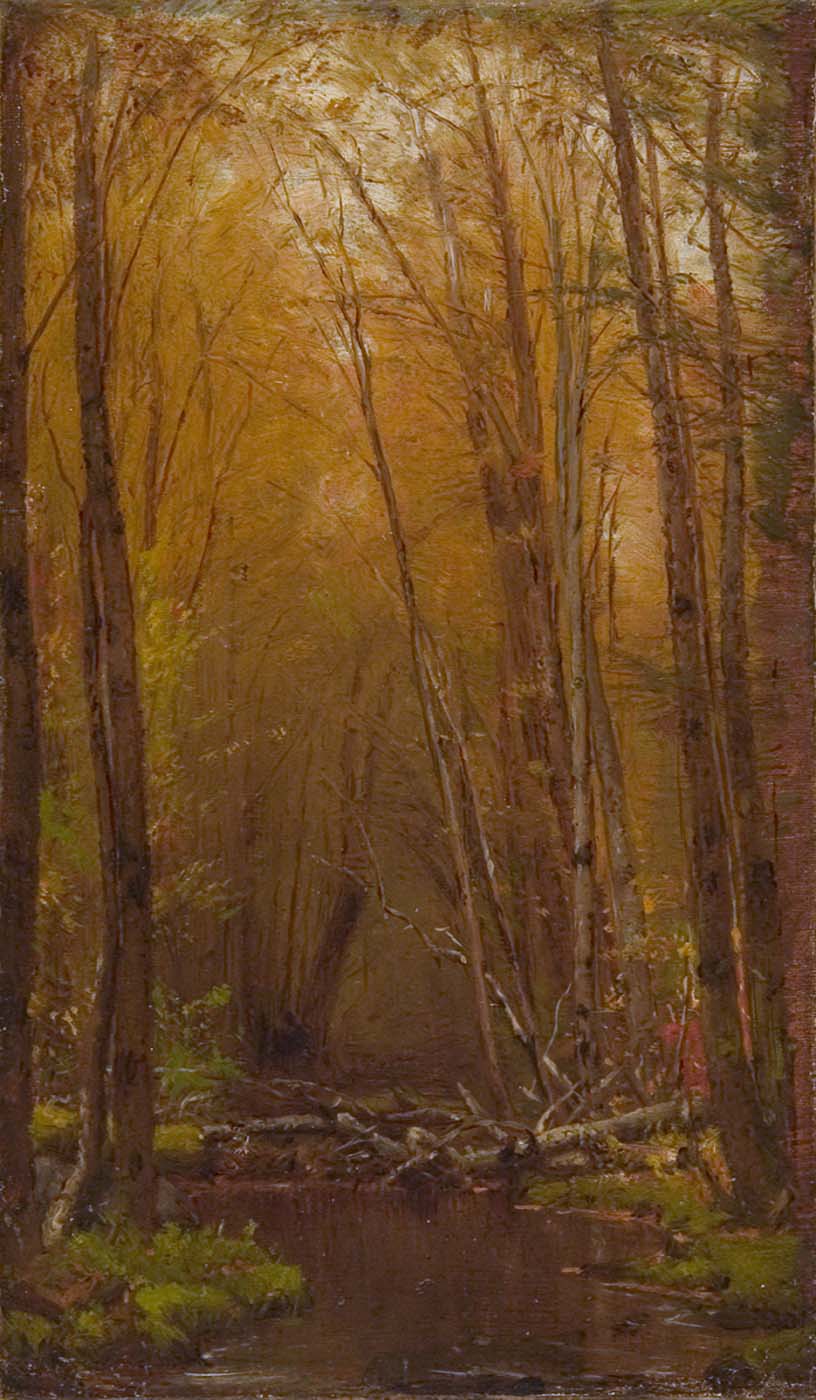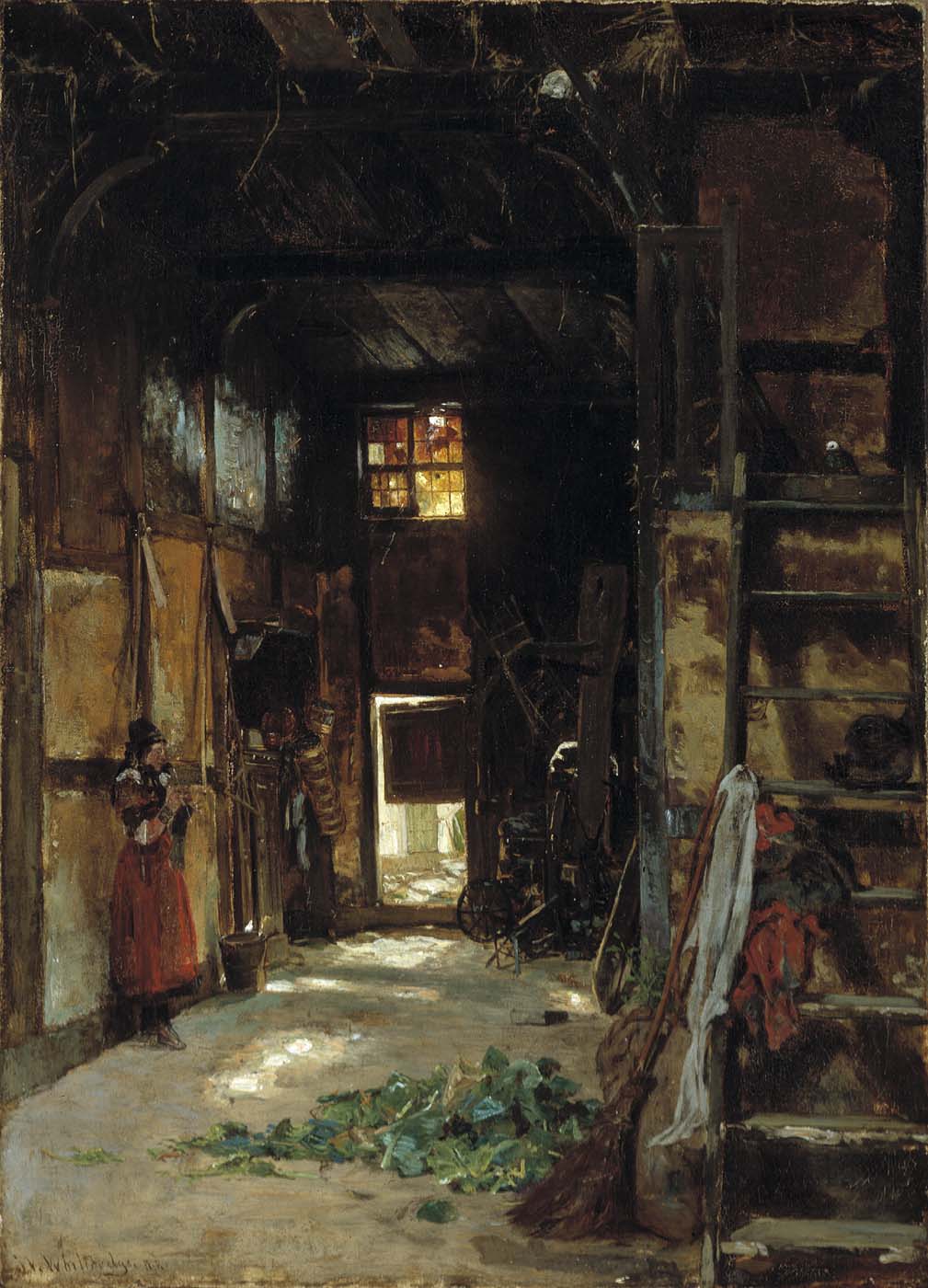Worthington Whittredge
Born Thomas Worthington Whittredge, 22 May 1820, near Springfield, Ohio. 1837, moved to Cincinnati to learn house and sign painting from his brother-in-law. Began studying art; ground colors and prepared canvases for Chester Harding. 1838, painted portraits. 1839, exhibited three landscapes, inaugural exhibition, Cincinnati Academy of Fine Arts. 1840, trained as daguerreotypist. Moved to Indianapolis, Ind.; established daguerreotype business, which failed. Befriended by Henry Ward Beecher; painted portraits of Beecher family.
1841, worked in Cincinnati as landscape painter; exhibited at Cincinnati Academy. 1843, brief partnership with B.W. Jenks, itinerant portraitist; went to Charlestown, W.Va., to seek commissions. 1844, Cincinnati. 1846, exhibited, National Academy of Design, New York; praised by Asher B. Durand. 1847, exhibited, American Art-Union, New York. Sold paintings to Western Art-Union, Cincinnati.
1849, went to London, Belgium, Germany, Paris. 1849–56, settled in Düsseldorf; met Emanuel Leutze. 1856, left Düsseldorf on sketching trip with Leutze and William S. Haseltine; joined by Albert Bierstadt in Switzerland. 1857, settled in Rome; constant company of Bierstadt and Sanford Gifford.
1859, returned to U.S. 1860, opened studio in New York; exhibited at National Academy; elected associate member. 1861, elected academician, National Academy. 1862, member, Century Association. 1866, accompanied General John Pope to Colorado and New Mexico. 1867, married Euphemia Foot. 1870, second journey west, with John F. Kensett and Gifford. 1873, visited Catskills. 1875–76, president, National Academy. 1876, bronze medal, Centennial Exhibition, Philadelphia. 1879–80, built home, Summit, N.J. 1883, first prize, National Academy annual. 1896, trip to Mexico with Frederic E. Church. 1901, silver medal, Pan-American Exposition, Buffalo, N.Y. 1904, exhibited 125 paintings at Century Association. 1905, finished autobiography. Died 25 February 1910, Summit, N.J.
The five oil paintings by Whittredge in the NMAA [now Smithsonian American Art Museum] span his artistic career—from his youthful sojourn in Europe to the last decade of his life—and reveal the artist's substantial talent and rather wide range of stylistic and thematic interests. His early studies with the Düsseldorf painter Andreas Achenbach resulted for a time in a dependence on the mannerisms of German landscape art (high-keyed palette and exaggerated grandeur of view, for example). Of the fellow Americans with whom he traveled and painted in Europe, only Sanford Gifford, whom he met in Rome, seems to have made an impression on his style. Throughout his career, though receptive to influences, Whittredge was seldom imitative for long. He exhibits, instead, an ability to assimilate the example of others in an individual manner.
His Interior of a Westphalian Cottage (1852), painted in Germany, has many parallels in contemporary European genre painting. Scenes of picturesque rural poverty, set in gloomy interiors romantically enhanced with rays and patches of light, can be found in pictures of Brittany (especially by French, English, and American artists), and in Dutch, German, and Swiss painting. Whittredge's effects of light are coupled with a spontaneous brushwork that both textures the surface and provides numerous linear accents. Later, in America, the artist produced a group of domestic, middle-class interiors (some in collaboration with Eastman Johnson ), which are more realistic and less sentimental and condescending than their European counterparts, in which poverty is perfumed and prettified.
Sakonnet Point, Rhode Island (ca. 1880) handsomely represents a landscape type recurrent in Whittredge's work after his 1866 trip to the western plains: a simple, open horizontal view, uncluttered and tranquil. Especially important is a group of paintings done in Rhode Island in the early eighties, which recall the Newport work of John F. Kensett. Shoreline, dunes, and spits of land are arranged in quiet bands, articulated with simple curves (here the road) and orchestrated with a warm, gentle palette. Probably painted on the spot, Sakonnet Point is calm and unhurried, an intimate amble for the eye.
At the age of eighty Whittredge's eye may have been turning inward when he painted Noon in the Orchard (1900), a painting that evokes the spirit of New England Transcendentalism. Although there is a slight connection with the woodland interiors of the Barbizon School, which Whittredge was influenced by, the dreamy, pastoral scene is closer to the late work of George Inness, who at the time lived scarcely ten miles away. The soft focus, as though the landscape were seen through an intermediate glass or lens, recalls Emerson in his famous essay Nature: "The beauty that shimmers in the yellow afternoons of October, who ever could clutch it? Go forth to find it, and it is gone; 'tis only a mirage as you look from the windows of diligence."
William Kloss Treasures from the National Museum of American Art (Washington, D.C. and London: National Museum of American Art with the Smithsonian Institution Press, 1985
Selected Images of Worthington Whittredge
Objects at Crystal Bridges Museum of American Art (1)
Objects at Gilcrease Museum (1)
Objects at Colby College Museum of Art (1)
Objects at Autry Museum of the American West (1)
Objects at Indianapolis Museum of Art at Newfields (3)
Objects at Princeton University Art Museum (3)
Objects at Smithsonian American Art Museum (5)
Objects at Archives of American Art (7)







